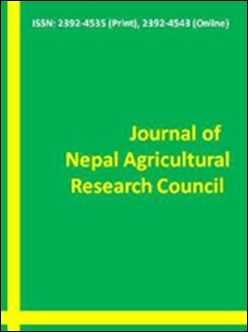Management of Anthracnose in Soybean using Fungicide
DOI:
https://doi.org/10.3126/jnarc.v1i0.15721Keywords:
Anthracnose, fungicides, pod blight, soybeanAbstract
Experiments on soybean (Glycine max L. Meril) were carried out aiming to control anthracnose (pod blight) caused by fungus, Colletotrichum truncatum with five treatments represented by different fungicidal sprays against control receiving no spray with three replicates of each under field conditions during two consecutive years from 2012 to 2013. In 2012, the higher Percent Disease Control (PDC) and Percent Yield Increase (PYI) were estimated in plot treated with SAAF (Carbendazim 12% + Mancozeb 63%) followed by Mancozeb fungicides. The mean Pod Infection (PI) was low in plots treated with SAAF followed by Mancozeb. Almost similar trends of disease control were observed in 2013. The lower Percent Disease Index (PDI) was 46.25% and mean PI was 29.67% with higher yield value of 2431.25 kg/ha obtained from the plots sprayed with SAAF then by Mancozeb. The results showed that, the combined treatment with fungicides, SAAF followed by Mancozeb were effective to control anthracnose or pod blight disease of soybean to increase the yield.
Journal of Nepal Agricultural Research Council Vol.1 2015 pp.29-32
Downloads
1187
1902




